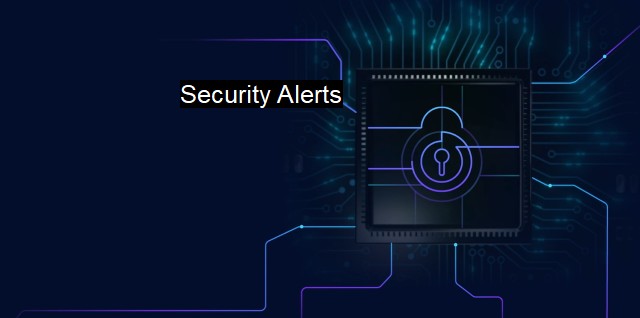What are Security Alerts?
The Importance of Security Alerts: Protecting Your Digital World from Cyber Threats
Security Alerts refer to the notifications or warnings which are triggered when a perceived or overt threat is detected in the computing system or network. These alerts are designed not only to inform about impending cyber threats but also to facilitate prompt action preventing any potential damage or breach of security.To understand the concept better, one can think of security alerts like the immune system of our body. When harmful elements such as viruses or bacteria invade the body, the immune system initiates an alarm to marshal the body's defenses. In similar ways, a security alert system detects harmful or potentially damaging threats to the computer or network and issues an alert.
These alerts play a vital role giving both system users and administrators real-time updates on their systems’ security status. This helps in diagnosing and rectifying potential vulnerabilities that may lead to significant consequences if not addressed quickly, thereby saving essential data from malicious threats.
The frequent targets of such attacks usually involve networks, personal computers, or mobile devices. Attackers often try to exploit system vulnerabilities to steal sensitive information, disrupt operations, or gain control of critical systems. With security alerts in place, a quick response can potentially neutralize an attack or prevent it from causing significant damage.
In the context of antivirus software, security alerts signal specific threat details to the user. For instance, if a suspect file has been downloaded, the antivirus software will initiate an alert, specifying the nature and level of threat posed by the concerned file. In response, users or system administrators can take appropriate actions such as deleting the suspicious file or moving it to a safe container where the file cannot harm other parts of the system.
Security alerts can be triggered by a wide range of factors. These factors include but aren't limited to unusual user behaviors or access patterns, suspicious system configurations, unauthorized changes to system files, and unidentified network traffic. After detection of such anomalies, the security system issues a security alert, thereby seeking immediate response.
Despite the clear benefits of security alerts, it doesn't come without challenges. For instance, an overabundance of security alerts in short periods may overwhelm system administrators, causing them to overlook genuine threats. This condition, known as "alert fatigue," can result in catastrophic results such as data breaches or massive service disruptions. Therefore, effective management and response strategies for security alerts are essential.
Equally important is the art of distinguishing false positives from actual threats. with advancements in artificial intelligence and machine learning, intelligent cybersecurity systems are getting better at this every day. They can analyze patterns and learn from past experiences, reducing false positives and honing the system's response to genuine alerts.
Establishing robust security alerts and receiving them in real-time is crucial for an effective cybersecurity infrastructure. These alerts act as the first line of defense against potential threats and attacks that could harm the data integrity and privacy of systems. A well-maintained and deftly managed security alert system, integrated with a responsive antivirus program, can provide optimal security and detect threats. Thus, it guarantees businesses can operate without disruptions and individuals can keep their personal data safe from unprincipled cyber activities. It truly exemplifies the "Prevention is better than cure" debacle, especially in an increasingly digital world. A world highly prone to numerous and continuously evolving cyber threats. So, proper understanding, acknowledgment, and action on security alerts are imperative in maintaining robust cybersecurity architecture.

Security Alerts FAQs
What is a security alert?
A security alert is a notification that something unusual or potentially harmful has been detected in a computer system or network.What causes security alerts?
Security alerts can be triggered by a variety of events, such as malware infections, unauthorized access attempts, and unusual network traffic patterns.What should I do when I receive a security alert?
When you receive a security alert, it's important to take it seriously and investigate the issue. You may need to run a virus scan, review firewall logs, or check for system vulnerabilities. If you're concerned about the security of your network or computer, contact a cybersecurity professional for help.How can I prevent security alerts?
Preventing security alerts involves implementing strong cybersecurity measures, such as antivirus software, firewalls, and regular software updates. It's also important to train employees and users on safe computing practices, such as not clicking on suspicious links or downloading unknown attachments. Regular security audits can also help identify potential vulnerabilities before they become security incidents.| | A | | | B | | | C | | | D | | | E | | | F | | | G | | | H | | | I | | | J | | | K | | | L | | | M | |
| | N | | | O | | | P | | | Q | | | R | | | S | | | T | | | U | | | V | | | W | | | X | | | Y | | | Z | |
| | 1 | | | 2 | | | 3 | | | 4 | | | 7 | | | 8 | | |||||||